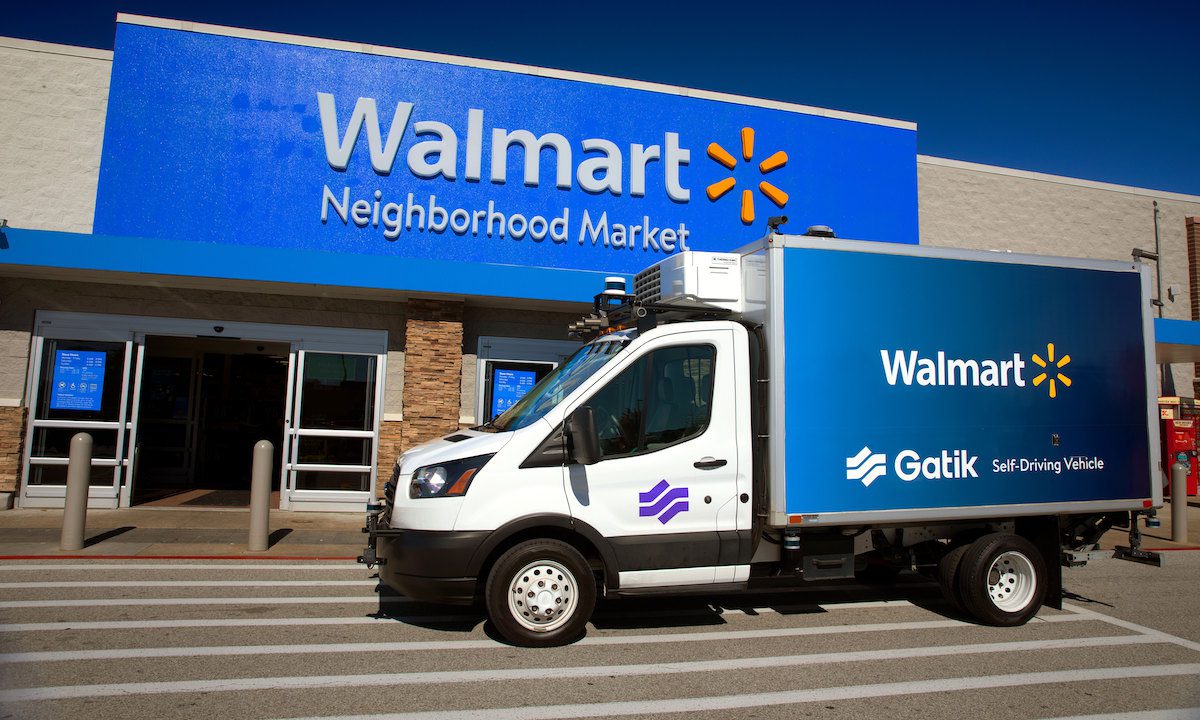Amid Industrywide Labor Crunch, Walmart Rolls out First-Ever Driverless Truck Route

As grocery stores work hard to keep products in stock in the face of the global truck driver shortage, the world’s largest grocer is seeking out ways to avoid the labor issue entirely. Walmart announced on Monday (Nov. 8) that its box truck pilot with middle-mile delivery automation company Gatik has moved to the next step: fully driverless routes. The trucks are transporting orders between a Walmart dark store and a Neighborhood Market, the retailer’s smaller-format shop, in Bentonville, Arkansas. The companies said this marks the first time in the world that a truck has operated autonomously, without a driver, on a commercial delivery route.
Read more: Walmart Marks Milestone With Fully Driverless Deliveries
The move comes amid a historic truck driver shortage. Per the U.S. Bureau of Labor Statistics (BLS), unfilled jobs figures from August, the most recent month on record, show that openings in “transportation, warehousing and utilities” were nearly twice that of the year before.
Plus, in late October, the American Trucking Associations’ Chief Economist Bob Costello noted that the industry is short 80,000 drivers, the most severe count on record, and he estimates that number could double by the end of the 2020s. He attributed the shortage not so much to a decrease in the actual number of drivers as to a rise in demand for goods.
Grocery has played a significant part in this elevated demand. PYMNTS’ research from The Bring-It-to-Me Economy: How Online Marketplaces and Aggregators Drive Omnichannel Commerce, created in collaboration with Carat from Fiserv — which surveyed more than 5,200 U.S. consumers about how their shopping habits have changed since the start of the pandemic — found that 46% are ordering groceries online more than they did prior to March 2020.
See also: Bring-It-to-Me Economy Ascends as Consumers Embrace Home-Centric Lifestyles
Additionally, the results of PYMNTS’ survey of over 2,200 U.S. adults, Consumers and the New Retail Landscape, show that 71% of consumers who shifted to shopping for groceries online plan to maintain at least some of these behaviors even once contagion concerns subside completely.
Related news: Study: 75% of Shoppers Will Keep Digital Habits After Pandemic
Walmart has been scrambling to fill its own driver vacancies, given that it is a long way away from having approval for driverless shipments across all of its markets. Current postings for truck drivers advertise signing bonuses between $8,000 and $12,000, in addition to quarterly safe driving bonuses. Overall, the company has 65 live postings under “Drivers & Transportation.”
“The number one reason our drivers don’t leave is retirement – our turnover is one of the lowest in the industry,” the company states. “Don’t miss out on this great opportunity.”
Drivers are not only necessary for deliveries between warehouses and stores: The driver shortage also impacts the company’s ability to bring goods to consumers’ doors amid the growing demand for online grocery delivery. That’s where the company’s drone initiatives come into play.
In June, John Furner, CEO and president of Walmart U.S., announced a new investment in on-demand drone delivery startup DroneUp, the pilot test of which is also taking place in Bentonville. On Nov. 2, the city’s planning commission approved the construction of a new modular structure for the retailer’s drone deliveries.
